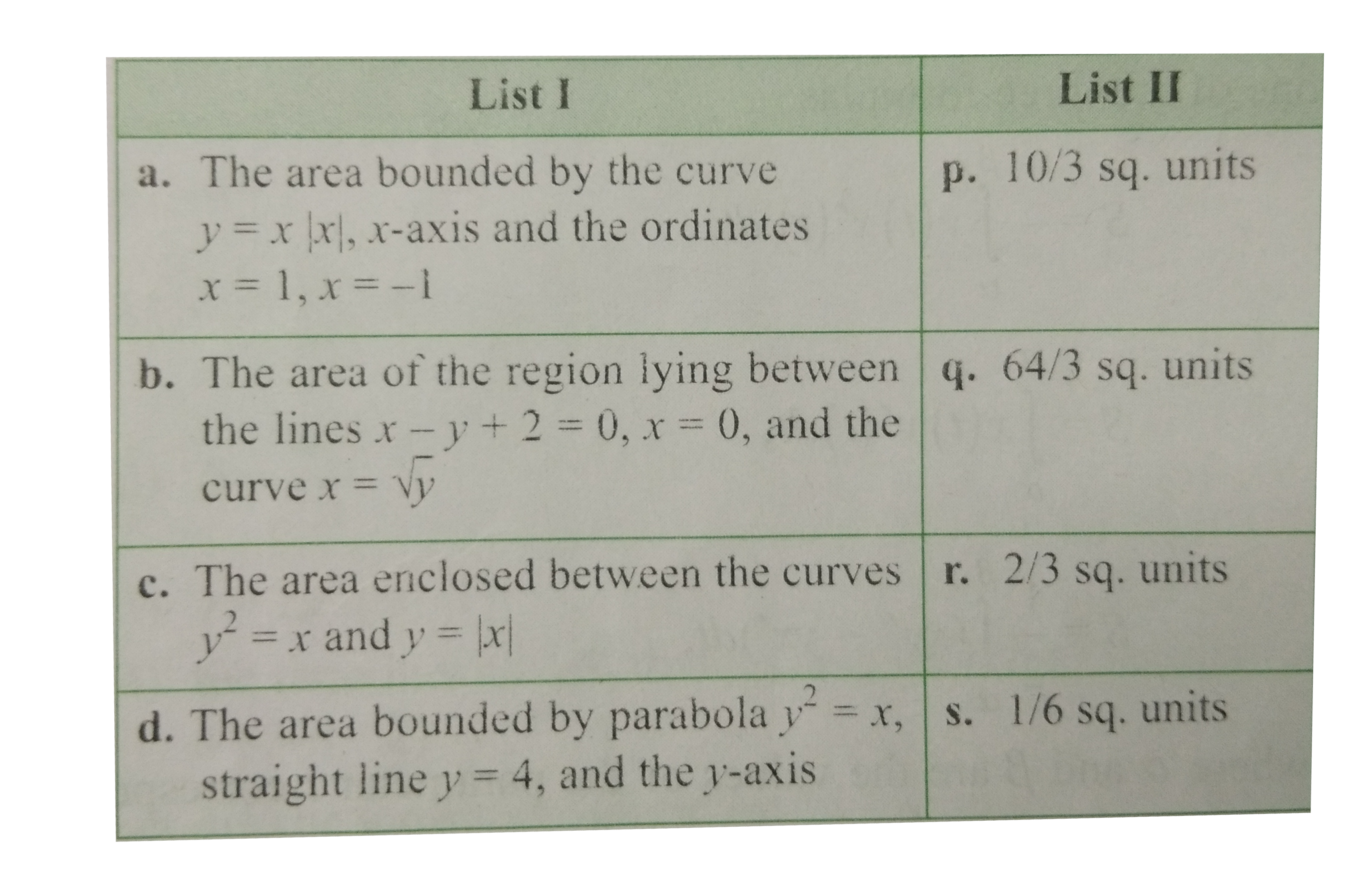Consider curves is the area bounded by thenSolution in Bengali
the ratio in which divides area between
The correct Answer is:A, B, D
Consider
So, graph is concave upward.
Area bounded by and coordinate axis in first quadrant
Area bounded by and coordinate axis in first quadrant
Area bounded by and coordinate axis in first quadrant
Topper's Solved these Questions
- BOOK - CENGAGE PUBLICATIONCHAPTER - AREAEXERCISE - Linkded Comprehension Type21videos
AREA
- BOOK - CENGAGE PUBLICATIONCHAPTER - AREAEXERCISE - Matrix Match Type5videos
AREA
- BOOK - CENGAGE PUBLICATIONCHAPTER - AREAEXERCISE - Exercises - Single Correct Answer Type40videos
AREA
- BOOK - CENGAGE PUBLICATIONCHAPTER - APPLICATIONS OF DERIVATIVESEXERCISE - Subjective Type2videos
APPLICATIONS OF DERIVATIVES
- BOOK - CENGAGE PUBLICATIONCHAPTER - BINOMIAL THEOREMEXERCISE - Comprehension11videos
BINOMIAL THEOREM
Similar Questions
Let Ar be the area of the region bounded between the curves y2=(e−kr)x(where k>0,r∈N) and the line y=mx(where m≠0), k and m are some constants
A1,A2,A3,… are in G.P. with common ratio04:56View SolutionMatch the following lists :
 06:30View Solution
06:30View SolutionArea enclosed by the curve y=f(x) defined parametrically as x=1−t21+t2,y=2t1+t2isequa<o πsq.units (b) π2sq.units 3π4sq.units (d) 3π2sq.units
08:59View SolutionProve that for λ>1, the equation xlogx+x=λ has least one solution in [1,λ].
View SolutionConsider a G.P. with first term (1+x)n, |x|<1, common ratio 1+x2 and number of terms (n+1). Let 'S' be sum of all the terms of the G.P., then
The coefficient of xn is 'S' is02:28View SolutionIf S_(r)=alpha^(r)+beta^(r)+gamma^(r) then show that det[[S_(2),S_(1),S_(2)S_(1),S_(2),S_(3)S_(2),S_(3),S_(4)]]=(alpha-beta)^(2)(beta-gamma)^(2)(gamma-alpha)^(2)det[[S_(1),S_(2),S_(3)S_(2),S_(3),S_(4)]]=(alpha-beta)^(2)(beta-gamma)^(2)(gamma-alpha)^(2)
08:51View SolutionThe parabolas y2=4xandx2=4y divide the square region bounded by the lines x=4,y=4 and the coordinate axes. If S1,S2,S3 are the areas of these parts numbered from top to bottom, respectively, then S1:S2≡1:1 (b) S2:S3≡1:2 S1:S3≡1:1 (d) S1:(S1+S2)=1:2
02:56View SolutionIf Sr=αr+βr+γr then show that ∣∣ ∣∣S0S1S2S1S2S3S2S3S4∣∣ ∣∣=(α−β)2(β−γ)2(γ−α)2
05:40View SolutionConsider curves S1:√|x|+√|y|=√a,S2:x2+y2=a2andS3: |x|+|y|=a. If α is area bounded by S1andS2,β is area bounded by S1andS3andγ is the area bounded by S2andS3, then
03:24View SolutionConsider the area S0,S1,S2…. bounded by the x-axis and half-waves of the curve y=e−xsinx, where x≥0.
The value of S0 is07:45View SolutionThe parabolas y2=4x and x2=4y divide the square region bounded by the line x = 4 , y = 4 and the coordinate axes into three parts. If S1,S2,S3 are respectively the areas of these three parts numbered from top to bottom then S1:S2:S3 is-
03:58View SolutionIf α,β are the roots of x2+x+1=0, and sn=αn+βn, then ∣∣ ∣∣31+S11+S21+S11+S21+S31+S21+S31+S4∣∣ ∣∣=?
View SolutionThe parabolas y2=4x,x2=4y divide the square region bounded by the lines x = 4, y = 4 and the co-ordinate axes. If S1,S2,S3 are respectively the areas of these parts numbered from top to bottom then S1:S2:S3 is
07:11View SolutionIf S0,S1,S2,… are areas bounded by the x-axis and half-wave of the curve y=sinπ√x, then prove that S0,S1,S2,… are in A.P…
07:11View SolutionConsider curves S1:√|x|+√|y|=√a,S2:x2+y2=a2andS3: |x|+|y|=a. If α is area bounded by S1andS2,β is area bounded by S1andS3andγ is the area bounded by S2andS3, then
03:27View SolutionConsider the area S0,S1,S2…. bounded by the x-axis and half-waves of the curve y=e−xsinx, where x≥0.
The value of S0 is04:36View Solution

